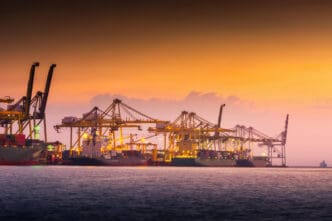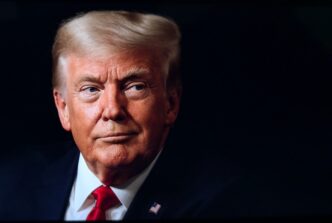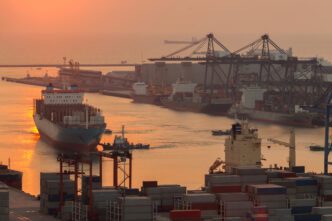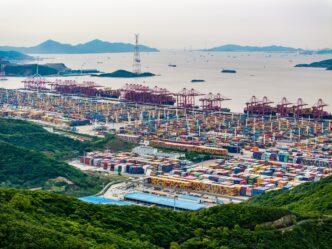WASHINGTON – The clock is ticking down to midnight on President Donald Trump’s global trade war. After months of high-stakes negotiations, whiplash policy reversals, and unprecedented economic pressure, a sweeping new regime of tariffs is set to snap into place, fundamentally reshaping the flow of commerce between the United States and the rest of the world.
As the August 1 deadline approaches, the Trump administration is projecting an unmistakable sense of vindication. A flurry of last-minute bilateral deals with major trading partners has rolled in, tariff revenue is soaring, and the U.S. economy has remained remarkably resilient, defying the dire predictions of mainstream economists. For the White House, this moment is the culmination of a high-risk, high-reward strategy built on a single, powerful concept: leverage.
But for businesses, importers, and global partners, the final hours are marked by chaos and profound uncertainty. The mechanics of how the new rates will be implemented remain unclear, and the administration’s ad hoc approach has left a whole host of countries scrambling to understand their fate. As the world holds its breath, the president’s disruptive and deeply controversial trade policy is about to become a hard economic reality.
A Strategy of Leverage and Vindication
For all the volatility that has roiled global markets since President Trump’s April 2 “reciprocal” tariff announcement, the White House has held firm in its belief that it would ultimately reach this point. The administration’s position was an anathema to the post-World War II consensus on free trade and cemented a stunning ideological evolution on tariffs within the Republican Party. But at its core was a simple, unwavering belief in the power of American leverage.
That leverage came from the singular, indispensable importance of the U.S. market to the global economy. The president’s personal conviction in the utility of tariffs—and his credible willingness to let them go into place and then escalate to crush any retaliatory efforts—only served to enhance that reality.
From the administration’s perspective, the strategy has been a resounding success. In the final week before the deadline, a steady stream of bilateral deals has been announced, most notably with the European Union and Japan, which have agreed to baseline tariffs of around 15%. The average effective tariff rate on imports to the U.S. now sits at its highest level in nearly a century, and as a result, tariff revenue is pouring into the U.S. Treasury.
Crucially, the most dire predictions of economic fallout have not come to pass. Financial markets, after an initial period of turmoil, have settled, with stocks consistently bouncing around record highs in recent weeks. Predictions of soaring inflation have not yet materialized, and the broader U.S. economy has weathered the storm.
The Chaos of the Countdown
While the White House projects confidence, the reality on the ground for those tasked with implementing and navigating the new trade regime is one of confusion and frantic uncertainty. The mechanics of how, exactly, the new tariffs will be implemented remained unclear just hours before the midnight deadline, creating a logistical nightmare for importers, customs agents, and foreign governments.
White House Press Secretary Karoline Leavitt said at a briefing Thursday that President Trump will sign an executive order imposing the new rates at some point today. However, that process has been complicated by a last-minute rush from trading partners to secure deals, forcing the administration to constantly adjust the details of the presidential directive required for the federal government to actually collect the new revenues.
This uncertainty and the extremely compressed timetable for implementation have been more of a feature than a bug of the administration’s approach. For importers staring down massive new levies in a matter of hours and the customs officials tasked with collecting them, the countdown has been “pretty messy,” one corporate executive told reporters.
As of Thursday evening, the final landscape was still taking shape. A steady stream of agreements has been clinched over the last week. In a dramatic escalation, the White House announced that India, after negotiations broke down, would be hit with a 25% rate and an additional penalty for its energy purchases from Russia. Another 17 nations were sent letters last month setting their specific rates if no deal was reached.
The biggest question mark remains over the roughly 150 countries that have not yet secured a deal. President Trump had set a 10% universal tariff on all countries on April 2, which has remained in place. However, he has also stated he is considering a new baseline tariff of between 15% and 20% for this group, implying that the initial universal tariff may increase for some or all of them. The White House has not yet clarified what that final level will be.
Leavitt said that countries that have not reached deals with the U.S. will hear the final verdict on their tariff rate “from this administration by the midnight deadline tonight.”
Democrats Rail Against “Chaos and Uncertainty”
As the deadline approached, Senate Democrats launched a furious attack on the administration’s policy, framing it as a reckless and damaging “trade war on the American people.”
Senate Minority Leader Chuck Schumer argued that the chaotic process is “making, first, a fool of the United States in the eyes of the nations of the world.” He added that there has been “chaos and uncertainty” because “Donald Trump has no plan, no strategy, and he’s not honest about what he presents.”
Senator Tim Kaine of Virginia pointed to his plan to file legislation challenging the announced tariff on Brazil, arguing that the president was abusing his emergency powers. He noted that the tariffs are being imposed on “a nation where the US has a trade surplus, not a trade deficit, because his friend is being prosecuted. That is not an emergency,” Kaine said, referring to the International Emergency Economic Powers Act that Trump has used to justify many of his tariffs.
Senator Ron Wyden of Oregon, the top Democrat on the Senate Finance Committee, warned that the administration’s opaque handling of trade deal announcements is a “recipe for corruption.”
Senator Maria Cantwell of Washington, the top Democrat on the Senate Commerce Committee, blasted the lack of congressional consultation. “The United States Senate should not be hearing about trade or tariff policies and developments by watching cable TV. The administration officials should be telling the Congress exactly what these proposals are,” she said. “This is serious business with broad economic consequences and affecting all our constituents.”
As the clock ticks down to midnight, the world is on the verge of a new era in global trade. President Trump’s high-stakes gamble appears, from his perspective, to have paid off, forcing major trading partners to the table and rewriting the rules of international commerce. But it has come at the cost of immense uncertainty and has alienated key allies. The long-term consequences of this disruptive and unprecedented policy are still unknown, but they are about to begin.








